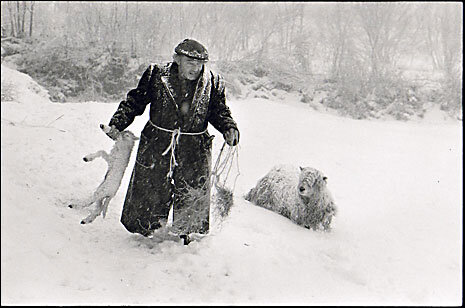Well. I’ve been and gone and done it. Whether it was a wise thing or not only time will tell.
Regular readers of this blog may remember that it is a longstanding aim of mine to expose, develop, wet print, mount and frame a photograph. Hanging on the walls here at Barker Towers are several examples of my work but they all have missed out one crucial stage: the traditional darkroom printing with water, chemicals, potions and other dark brews. They have all been digitally printed. I have always shied away from the darkroom for reasons that, to be honest, hint at a certain lack of moral fibre. The whole thing seemed, well, just a bit too complicated: too much kit, too expensive, no darkroom space, takes forever and so on.
The central piece of kit in your darkroom is the enlarger – which fires light through the negative and onto a photosensitive sheet which you then douse in developer and fixer and, hey presto, you have a photograph. There are many secondhand enlargers on ebay and other sites but I know nothing about them and would probably be throwing my money away. Then one day, somewhere, I noticed that a firm was seeking crowdfunding for a new design of enlarger which would apparently knock the socks off everything which had gone before. I had vaguely heard of the firm, The Intrepid Camera Company. . They are best known for making large-format cameras and so are in the business of rethinking traditional photographic kit design. It must have been an impulse, but I decided to sign up for their proposed enlarger. In a curious way I think that it was a subconscious delaying tactic. I reckoned it would take them months to fund and build and manufacture it so I would be safe for quite a while from the promptings of my inner Ansel Adams.
But the day of reckoning always comes, Intrepid proved to be as good as its word, and a box arrived shortly before Christmas. I left it where it was for a few days and then found a quiet moment to have a look at the contents.
Enlarger, control box and negative holders. Those negative holders are a thing of sublime metallic beauty compared to the flimsy plastic ones that came with my scanner. Photo © Intrepid Camera Company.
First things first. It looks beautifully made, with some bits of it fashioned from, yes, real metal and others from futuristically light materials the nature of which I can only guess at. Being a man of a certain age I would have greatly appreciated an exploded diagram and some basic written instructions but I think I have to accept that these days instructions are what you find on the net and not what you get in the box. There is indeed a little leaflet included about the control box, but that’s your lot. It is, as they promised, light, compact, packs down small and leaves me with no excuses whatsoever.
All I can now do is rely on my inner slacker. (He lives next door to my inner Ansel Adams and believe me those two are bad neighbours.) I need to buy some basic bits of kit: a lens for the enlarger, a focus finder, some trays and chemicals and so on. That should take me ages. Then I am going to have to knock up some blackout curtains for the bathroom. We’re talking months here. But I am going to make a public commitment. By the end of this year-ish there will be hanging on a wall of this room a darkroom print that I have shot, developed, wet printed, mounted and framed myself. Yes, I’m looking forward to it but as in all human affairs we must remember: it’s about the direction and not the goal.
The darkroom set-up, only not dark. Obviously. Photo © The Intrepid Camera Company.
In order to maintain the high standards of artistic integrity to which this blog aspires I have to admit a little shamefacedly that I have written to Intrepid and asked for permission to use the two photos above but I haven’t yet received a reply. I am sure they’re busy people though and I may not be their number one priority so for the moment I am counting on their goodwill……

























































